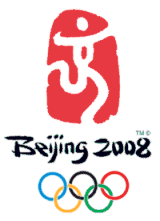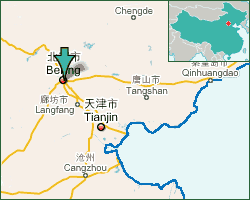 The seat of the 2008 Olympic Games, Beijing got ready to this epochal event with the utmost attention to details and magnificence, the heritage of this ancient people of farmers, philosophers and warriors. Beijing International Airport, 20 km southeast from the downtown center, is by now one of the largest in the world, and the first in Asia for air traffic.
The seat of the 2008 Olympic Games, Beijing got ready to this epochal event with the utmost attention to details and magnificence, the heritage of this ancient people of farmers, philosophers and warriors. Beijing International Airport, 20 km southeast from the downtown center, is by now one of the largest in the world, and the first in Asia for air traffic.
Beijing, China: tourist information

How to Travel
Seat of the Olympic Games 2008, Beijing (Peking) the capital of the most populous nation in the world, is also one of the main financial, economic and cultural centers in Asia. An important roadway hub, the city is circled by 5 road rings, connected to 9 highways directed all over China.
Many railway lines connect all suburbs, and the two main stations, Beijing Central Station and the West Station, connect to a Guangzhou, Shanghai (Nanxiang), Harbin, Baotou, Taiyuan, Chengde and Qinhuangdao; moreover the Central Station is also connected to destinations in other countries, as a number of cities in Russia, Pyongyang, Kowloon, Hong Kong.
The Airport Expressway connects downtown Beijing to the airport from the south, and within 2008 3 more fast highways are due to connect to the airport as well, the 2nd Airport Expressway from the south-east, the Northern Airport Line from the nord-west and the Litian Expressway from the east. By June 2008 also a subway line will reach Beijing airport directly.
History
What to see
- The Great Wall, included since 1987 among the Unesco World Heritage Sites, the biggest creation of mankind under any point of view, this defence system accompanied the history of China for thousands of years...
- The Palace Museum (Former Imperial palace known also as the Forbidden City) the biggest in the world with an area of 720,000 sq mt, with more than 9,000 rooms. The main building is the Hall of Supreme Harmony, or Hall of the Golden Throne, the most important and largest, used for ceremonial occasions. The Palace area is surrounded by 10-mt high walls and a 52mt-wide moat; at each of the 4 corners of the wall is a tower with a roof covered with yellow glazed tiles. The Palace is now also a museum.
- The Summer Palace, a wonderful example of the imperial Chinese gardens, about half an hour by bus northwest of Beijing; it was built in 1153 and was the imperial palace of the Jin Dynasty (1115 - 1234). Under the Qing Dynasty (1750) the palace was enlarged to include the Qing Yi Garden; burned by the British-French Forces in 1860, it was rebuilt in 1888 by Empress Dowager Ci Xi. The Summer Palace is now a public garden and includes the Longevity Mountain and the Kunming Lake, around which are 3,000 halls and temples, among them the Pavilion of Precious Clouds and the Buddhist Temple of the Sea of Wisdom. This complex is an amazing fusion of nature and man-made elements.
- The 13 Ming Tombs, at the foothills of the Yianshou Mountain northwest of Beijing, which go from the Changling Tomb of 1409 to the Siling Tomb in 1644, covering the 235 years of the Ming emperors, the constructors of the Great Wall. A wide, 7-km long avenue, all paved in stones, lead to Tombs; the road is lined by giant-size monolith stone statues, 24 of animals (lions, horses, camels, elephants and mythical animals) and 12 of dignitaries. The largest tomb is that of Zhu Di, the third Ming emperor, and its huge hall is entirely in precious wood.
- The Tian An Men Gate: here on October 1 1949 Mao Zedong proclaimed the People's Republic of China. The Gate is a symbol of Beijing and China; built in the 15th century it is formed of five doors with in front seven white marble bridges over a stream. This huge Gate separated the square from the Forbidden City, and was built in 1417 under the Ming dynasty. The Tian An Men square is the largest public square in the world, 880 meters in the north-south direction, 500 metres along the east-west direction.
- the Temple of Heaven, situated in south Beijing, it was completed in 1420 under the Ming Emperor Yong Les and is the largest temple complex in China, with an area of 2.7 million sq mt; it was here that the emperors prayed for a good harvest. The Temple consists of two rows of buildings spanning from north to south, and connected by a walkway 30 meters wide, placed at a height of 4 mt.

